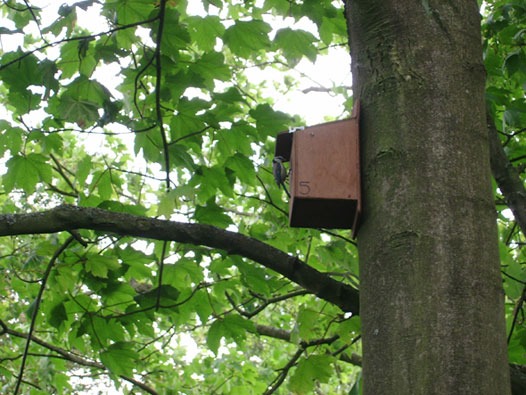Wildlife in Winter

It seems as though the weather is finally starting to turn colder and winter is on its way. With that in mind, the zookeepers at Flamingo Land are very busy at the moment helping both the exotic and native species found at the zoo to get through the next few months as comfortably as possible. Some of the animals at Flamingo Land, including the giraffes, rhinos and flamingos, are quite vulnerable to cold weather, so staff keep a close eye on the temperature and will keep these animals safely indoors if necessary. Other animals may be hardier but still like extra bedding to snuggle into at this time of year, so there’s been plenty of extra straw added to their houses.
Of course, the animals in the enclosures aren’t the only ones that live at Flamingo Land – there are lots of native British species that make their home in the trees, hedgerows and fields around the site. Helping these to get through the winter is just as important and so we’ve been cleaning out and repairing the nest boxes that are spread around the park for the use of wild birds.
This is a great time of year to give your garden wildlife a helping hand; the reduction in the amount of suitable habitat available in our countryside nowadays makes gardens a valuable resource for all kinds of creatures. If you already feed your garden birds, do keep up with it throughout the colder months. Birds quickly get used to food being available in certain places and can waste precious energy flying to feeders only to find them empty. If you don’t feed the birds already, now is the perfect time to start! Just make sure to clean bird feeders regularly to avoid spreading disease and if you’d prefer not to attract larger birds such as collared doves and wood pigeons, steer clear of the cheaper bird seed mixes with corn and large grains in them.
If you put up bird boxes over the winter, birds will have a chance to get used to them before choosing a nesting site in spring. Make sure it’s far enough off the ground that the birds won’t be attacked by cats as they fly in and out and try not to site nest boxes facing south as they can get too hot. Don’t be disheartened if yours doesn’t get used the first year – birds take time to get used to things and may well use it the following year. If you have had one in one place for several years and it’s never been used though, try moving it elsewhere. Autumn is the best time to remove old nests.
Now is also the time to think about helping hedgehogs, as they get ready to hibernate. You can buy hedgehog hibernation houses but simply leaving an area of the garden untidy can work just as well. Log piles, compost heaps and bundles of twigs and sticks can all be used for hibernating, and even if you don’t attract a hedgehog, insects, frogs and toads may be grateful to you!


